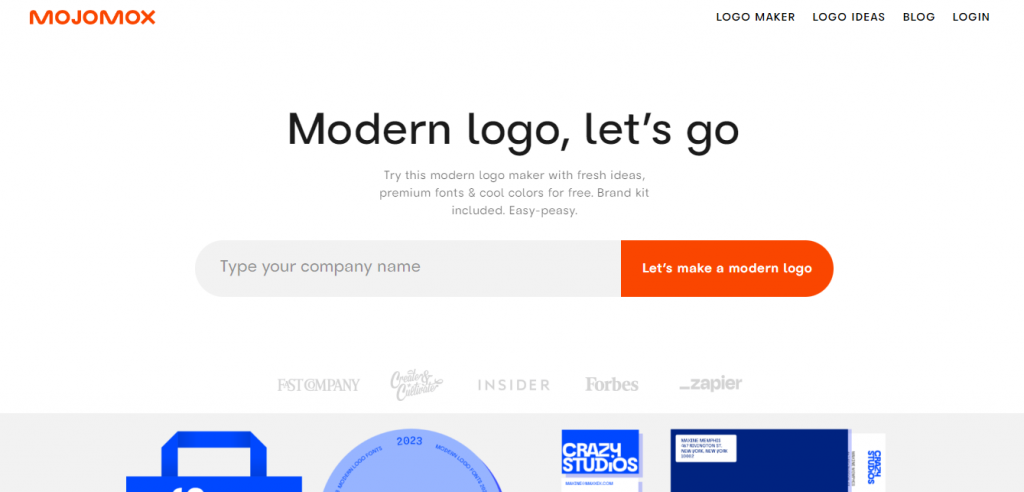Is it cheaper to attract new customers or improve customer stickiness and retain the old ones?
That’s an age-old question that pops up now and then and leaves people confused.
Well, it’s a lot cheaper to retain old customers.
But the real question is- is it cheap enough to justify the efforts you have to put in to retain those customers?
Studies show that it’s almost 6 to 7 times cheaper to retain old customers and generate business from them.
That’s because the probability of sale from an old customer is between 60-70% compared to 5-20% from new customers.
But how do you retain your customers and make them stick?
A popular solution is the Net Promoter Score (NPS).
Historically, customer service teams across most industries have deployed the Net Promoter Score (NPS) as the single key indicator of success.
Today, the customer landscape has changed dramatically. The market is more competitive, with customer touchpoints scattered across multiple channels.
It’s better to set up other markers to understand customers’ behavior better. It will help predict customer stickiness, loyalty and churn more accurately.
We brewed this blog to compile these customer stickiness metrics in one place to help you set a definitive retention program. You’ll also find many practical strategies that can improve product stickiness in your business.
What Is Customer Stickiness?
Customer stickiness indicates how likely your customers are to return and purchase your product again, even in a competitive market, due to the value proposition you offer.
Your product offering has several aspects that can help you create sticky products and make your customers want to buy more, such as:
- Price
- Product quality
- Convenience
- Speed
- Benefits
- Engagement experience
Getting new customers is great, but making them stick around for more purchases is what makes a real difference to your bottom line.
Not just that, but repeat customers have an almost 130% increased lifetime value because when a customer purchases from you the second time, the chances of them coming back are over 95%.
So, what are the key takeaways?
Put in efforts to create sticky products and convince your customers to purchase from you again because this is what will help you sustain long-term growth.
With the basics of customer stickiness out of the way, let’s now look at some of the key differences between customer stickiness, customer retention, and customer loyalty.
Customer Stickiness vs. Customer Retention vs. Customer Loyalty
The main difference between customer retention and stickiness lies in what customer retention does not consider.
Customer retention, a metric in itself, does not specify why your customers choose to stay with your product or business. Your customers can make repeat purchases for different reasons, such as a lack of viable alternatives in the market or an inclination toward your product. Customer retention does not focus on these underlying details.
That’s where customer stickiness comes into play.
It lets you better understand what makes your customers stay and why they come back by highlighting specific aspects of your value proposition that attracts them (as discussed in the section above).
So customer retention and customer stickiness do have some differences, but what about customer loyalty?
Customer loyalty may seem similar to customer stickiness, but that’s not the case. Here’s why:
- Sticky customers continue to purchase your products due to the value they receive from them, which is better than the available alternatives.
- Loyal customers continue to purchase your products because they love your product or brand and feel an emotional connection with it.
Customer stickiness happens when a customer is attracted to your products because of the benefits and value it offers that they cannot get elsewhere.
But customer loyalty is something you get when you build a deeper relationship with your customer. They build an emotional bond with your brand so that they don’t even consider any alternative.
Now that we know how the three of them differ, let’s move on to discover how customer stickiness can help grow or even sell your business online”
How Customer Stickiness Helps Grow Your Business
Customer stickiness can significantly impact your business’ longevity and long-term success. Here are some of the ways it can help you grow your business:
1. Reduces Churn
Even if you’re incredibly efficient in selling subscriptions to your prospects, you won’t get too far if your customer churn is high. It’s like filling a leaky bucket.
User stickiness is a solid fix to this problem because as more customers choose to stick with your brand, your churn rate automatically goes down.
It can be achieved by simply creating products that provide value to your customers and make them stick.
That’s why your focus should always be on uplifting your products’ value proposition to improve your business’s fundamental health.
2. Reduces the Cost of Acquisition
Retention is cheaper than acquisition, and that is a well-known fact. Plenty of research has been conducted on retention vs. acquisition costs, and numbers have always favored customer retention.
When you have a high churn rate, you are forced to look for new customers in the market to sustain your business because even if you spend months nurturing your leads, they might choose your competitor over you.
It means you would lose the customers even before you can start generating profits from them, and your acquisition costs would go up with time.
Kind of a scary situation, isn’t it?
That’s where customer stickiness can save you from the added cost and effort of acquiring new customers. It generates repeat business which helps balance the cost of any new customers leaving your business.
But it’s easier said than done. You need to put in significant efforts from your end to add value to your customers for them to stick around, such as:
- Personalize the customer experience
- Close the feedback loop quickly
- Release regular product updates
- Run pricing analysis
- Monitor customer experience index regularly
3. Provides Up-Selling/Cross-Selling Opportunities
As you build brand value and customers’ trust in your products, You can explore up-selling and cross-selling opportunities to increase the average purchase value.
Suppose your product is an online survey tool, and the most popular plan is the one that costs $25/month. You also observe that the subscribers of this plan consist of some of your long-standing customers.
With that level of product stickiness, you can create campaigns to target such customers and relay information about the added benefits and features in your $40/month plan subscription.
You can even interest them in a different line of products like an CRM software or a help desk tool that might connect with their existing purchases. Here, cross-selling can result in additional subscriptions on top of the existing ones to develop extended product stickiness.
4. Increases Referral
Word of mouth is a gem for any business owner out there.
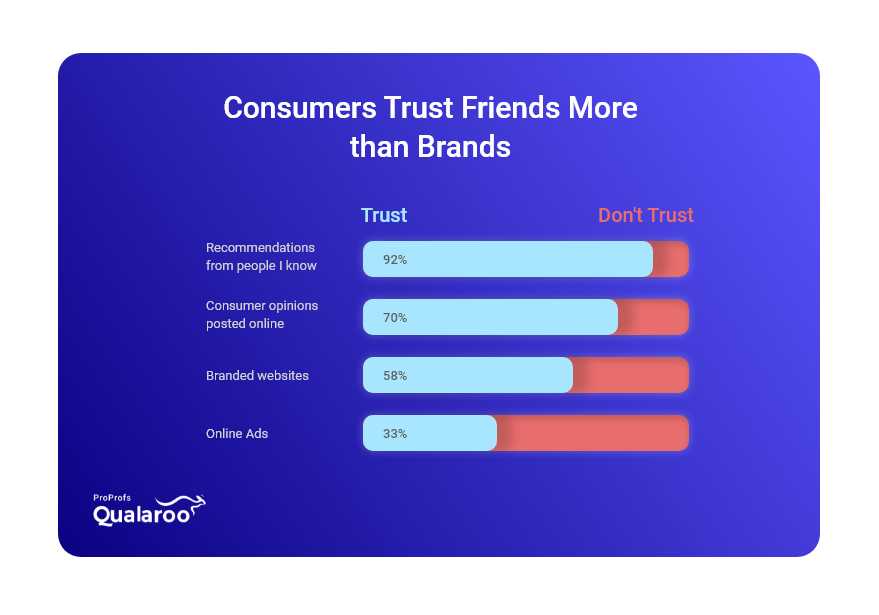
If you have focused on the stickiness of a product, that means you have a happy bunch of customers, and almost 72% of the happy customers like to talk about the brand they prefer.
You can turn your existing customers into promoters to refer your brand and products to potential customers. It’s arguably the best way to grow your business without spending any extra money.
5. Improves Customer Lifetime Value
Customer stickiness reduces churn and improves up-sell and cross-sell opportunities; we just found that out.
But what that truly means is that your existing customers are now spending more money on your brand, which directly increases their lifetime value (LTV).
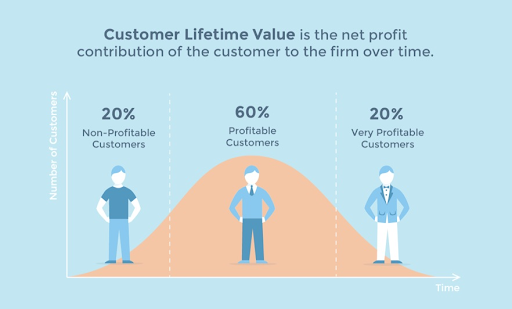
Increasing the customer lifetime value/ customer acquisition cost (LTV/CAC) ratio is fundamental to the growth of your business.
It means revenue outweighs the acquisition cost. It also allows you to spend even more on acquiring new customers and making them stick.
Now that we know how customer stickiness can positively impact your business, let’s move ahead and look at how to measure it.
Measuring Customer Stickiness With 6 Effective Metrics
Here are some key experience metrics you can track to get an accurate picture of customer stickiness:
1. Net Promoter Score (NPS)
Net Promoter Score (NPS) is a highly reliable metric to gauge customer loyalty and satisfaction by asking a simple question – ‘How likely are you to recommend the company/product to your friends and colleagues?’
NPS survey is measured on a 10-point rating scale to segment respondents into three categories:
- Promoters (9-10)
- Passive (7-8)
- Detractors (0-6)
It’s one of the most used standardized metrics worldwide to measure customer loyalty and stickiness.
Many experts, including Frederick Reichheld, refer to NPS as “The one number you need to grow.”
Here is the formula to calculate NPS score:
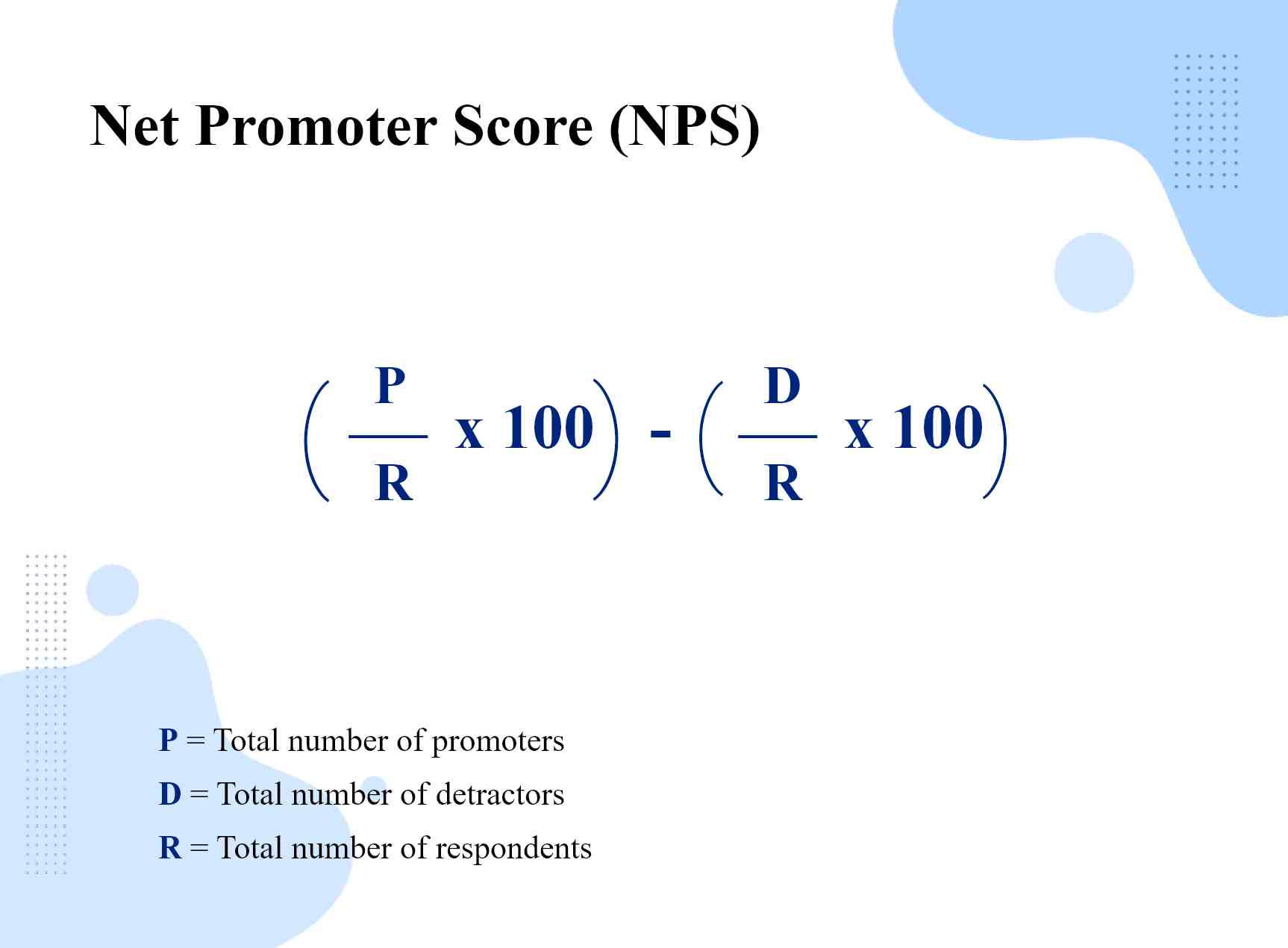
You can also calculate the percentage of promoters and detractors separately and deduct the latter from the former to get your NPS score.
Survey tools like Qualaroo can help you capture NPS data from multiple channels across the customer journey to give a complete picture of their experience. These include:
- SMS
- Website
- Mobile prototypes
- SaaS applications
Watch: How to Create Net Promoter Score Survey with Qualaroo
2. Customer Retention Rate
Customer retention rate has to be the most straightforward metric for measuring customer stickiness.
We know we said that customer retention and customer stickiness are different metrics, but they have some fundamental similarities. Both of these metrics uncover the percentage of customers that stay back, indicating the overall cost of acquisition saved in the process.
Here’s the formula to calculate the customer retention rate:
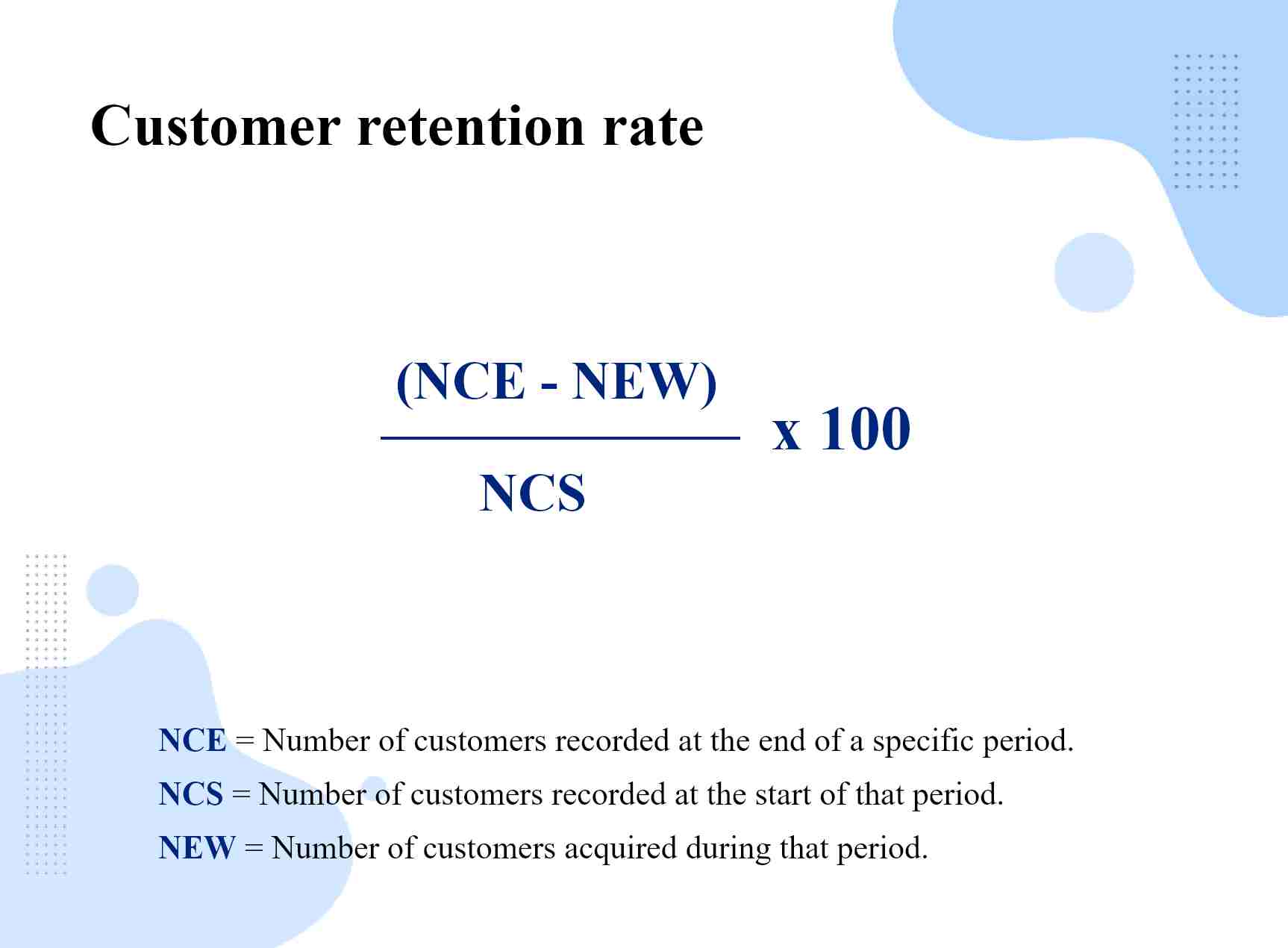
Where:
- NCE= Number of customers recorded at the end of a specific period.
- NEW= Number of customers acquired during that period.
- NCS= Number of customers recorded at the start of that period.
Note– Customer retention is calculated for specific periods like days, weeks, or months and always reflected as a percentage.
3. Repeat Purchase Rate
As the name suggests, repeat purchase rate is a metric that indicates what percentage of your customers come back for another purchase.
Here’s the formula for repeat purchase rate:
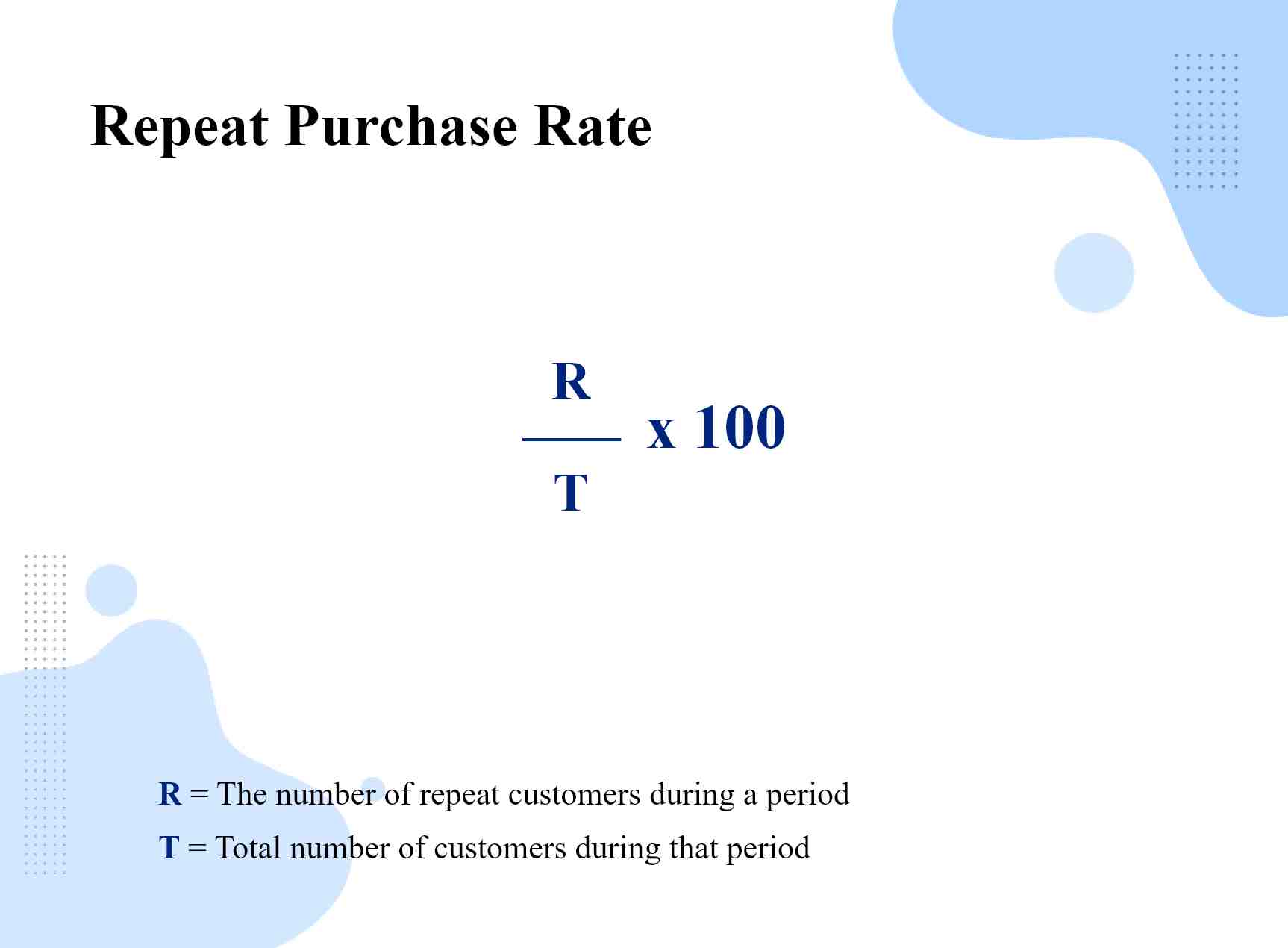
4. Churn Rate
Churn rate indicates what percentage of your customers have decided to move on and switch to the competition within a given period.
Even though churn is completely natural for any business, it should not exceed a certain threshold. If your annual churn rate goes above 7%, it’s time to take control of the situation and plug the leaks.
Here’s the simplest formula to calculate the customer churn rate:
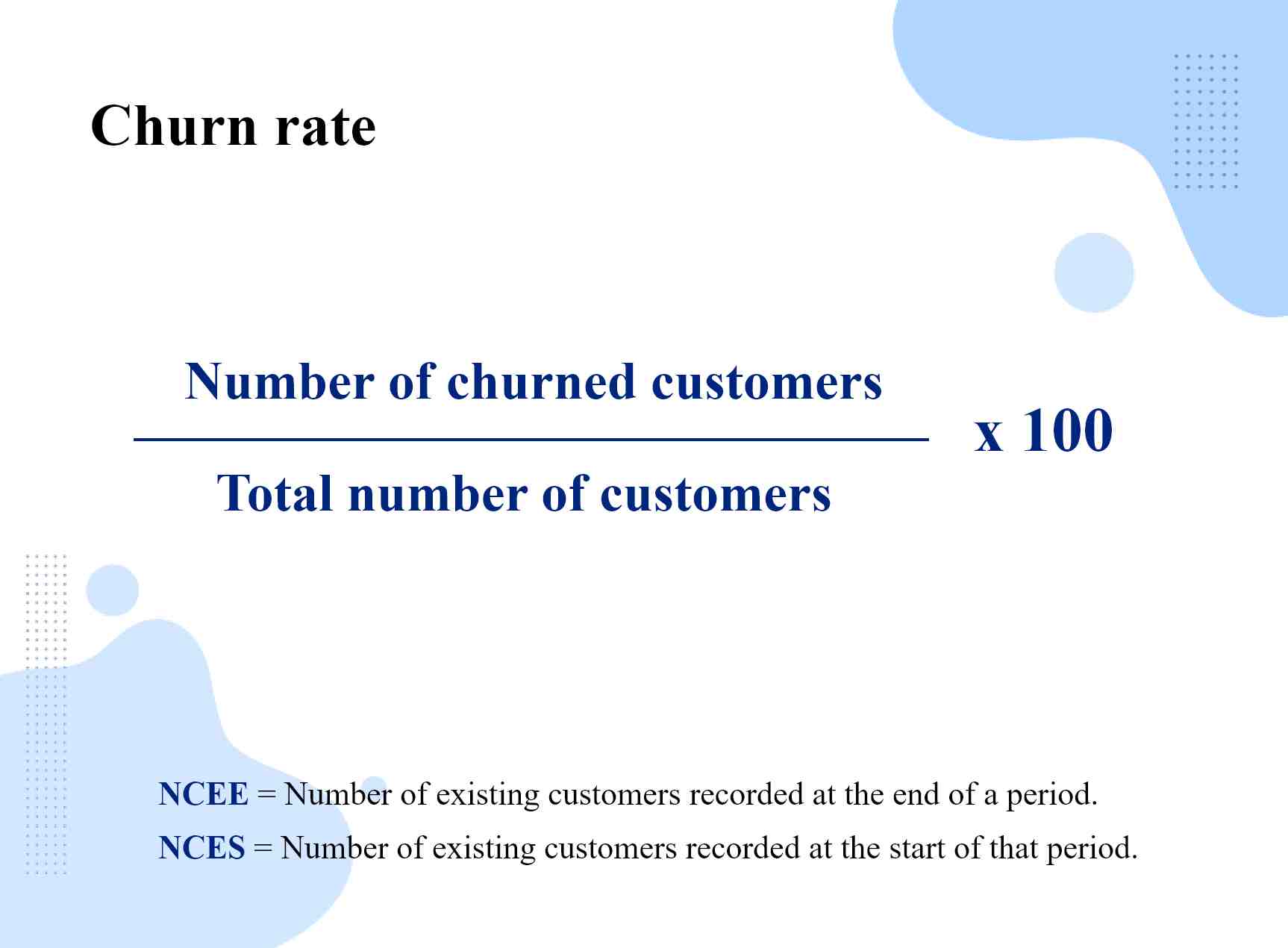
The churn rate is a hot topic of debate among marketers and data scientists, which is why several formulas exist for calculating it. The simplest one is given above, but there are some factors that it fails to consider.
So a more accurate formula was developed, which is now used by many organizations.

5. Customer Engagement Rate
Customer engagement rate is a metric that indicates the level of involvement your customers have with your products and the brand overall. People who invest time interacting with a brand are more likely to convert and stick to it.
Engagement refers to the ways customers can interact and communicate with the brand. These include:
- Likes
- Comments
- Reactions
- Shares
- Direct messages
Engaged customers indicate the effectiveness of your marketing efforts and are testimony to an increased level of customer stickiness.
Here’s the formula to calculate the customer engagement rate:
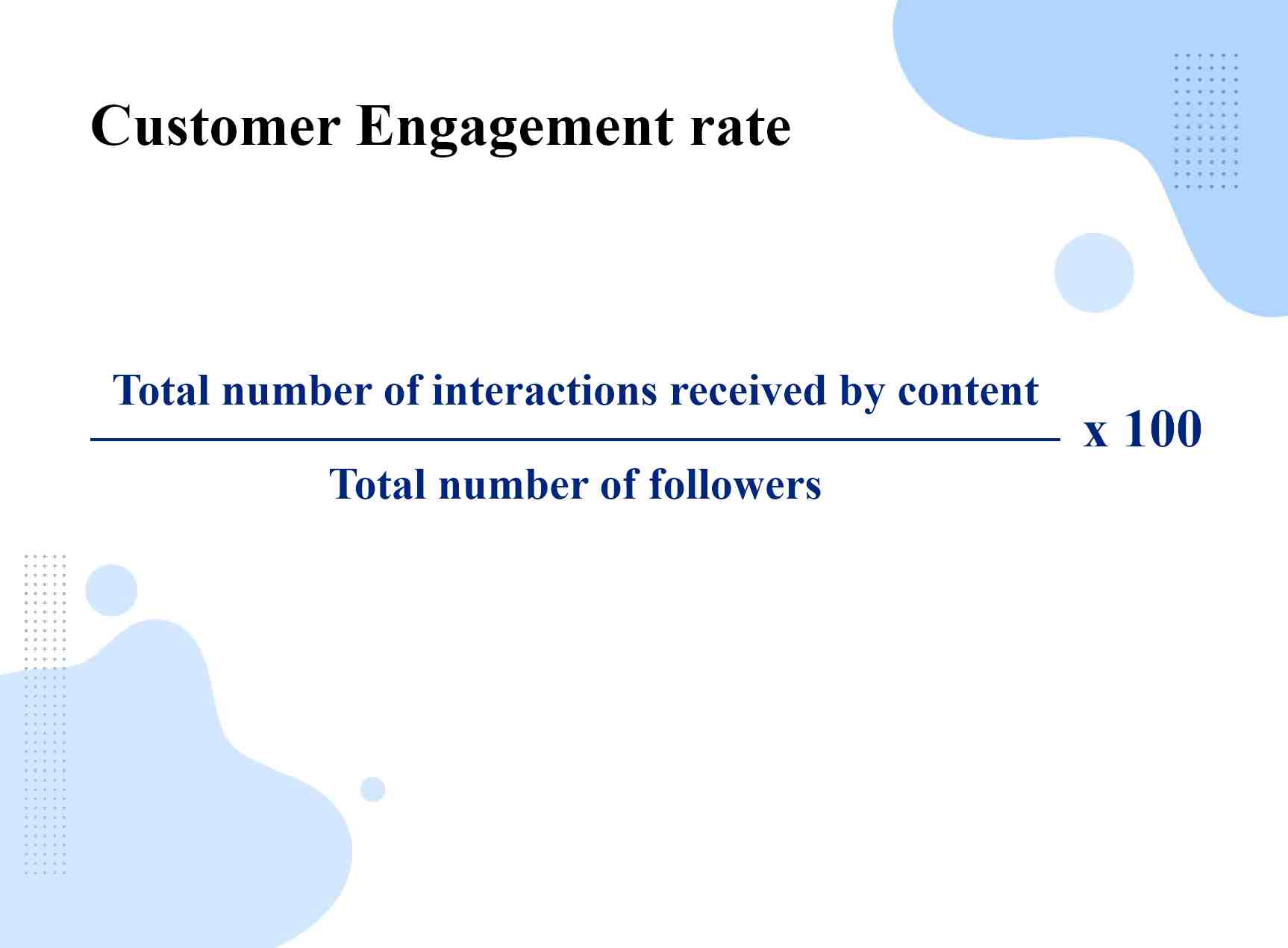
6. Existing Customer Revenue Growth Rate
Existing customer revenue growth rate is a customer stickiness metric that looks at your revenue generated from your customer retention, loyalty, and customer success efforts.
Your revenue growth rate will also start climbing if your marketing team can successfully up-sell, cross-sell, and increase the purchase frequency.
Here’s the formula to calculate the existing customer revenue growth rate:
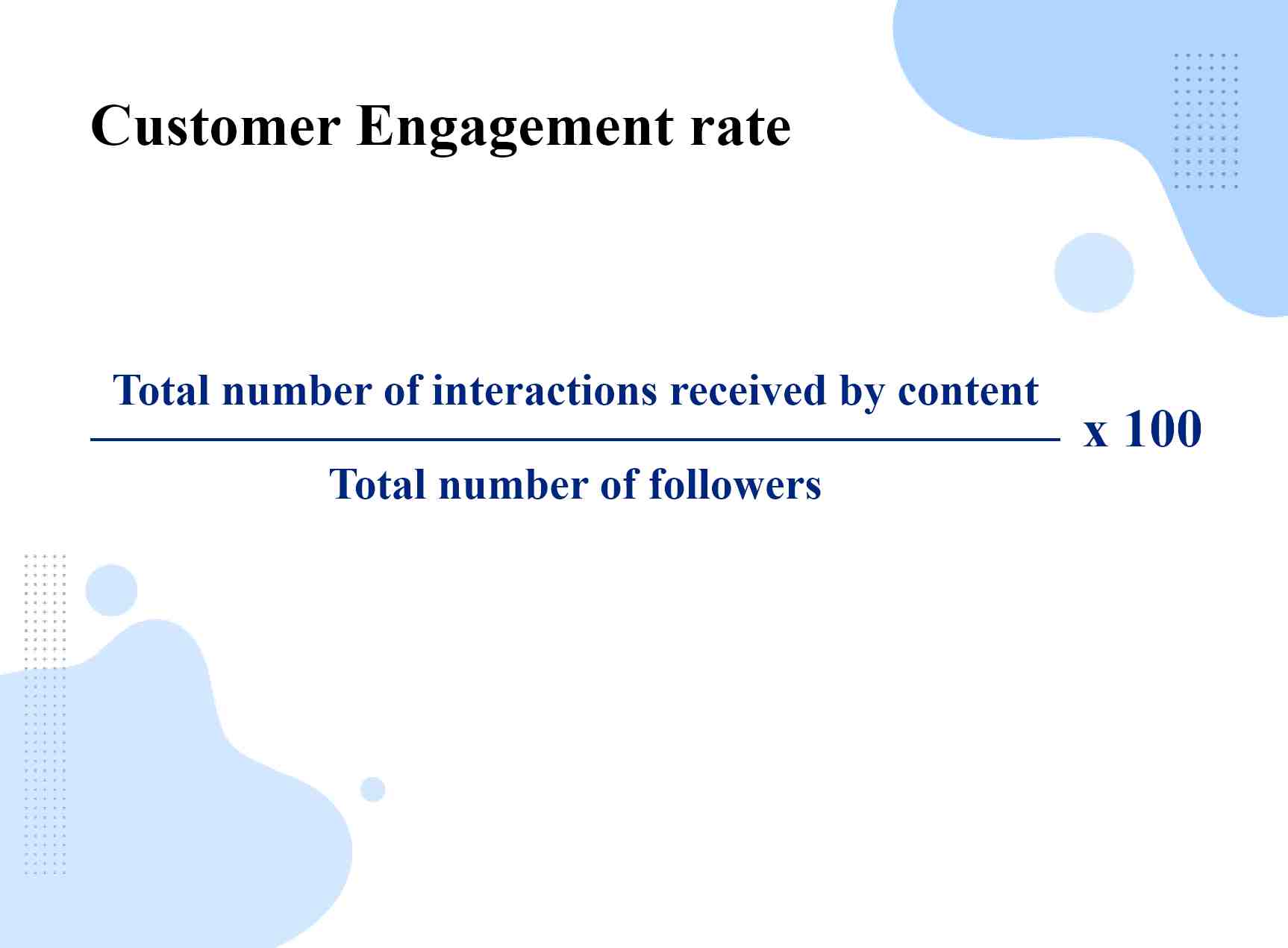
Note: It is best to measure the revenue growth rate every month. All you have to do is calculate your monthly recurring revenue and put it into the formula. Also, only consider the revenue from existing customers and not the new ones.
With that out of the way, let’s now look at different strategies that can help improve the stickiness of a product.
FREE. All Features. FOREVER!
Try our Forever FREE account with all premium features!
7 Ways to Improve Customer Stickiness
Let’s look at some practical ways of making the most of them when it comes to good customer stickiness:
1. Collect Targeted Feedback

The cost of acquiring new customers is steadily rising, so retaining the ones you currently have is more important now than ever.
And targeted feedback can help you do that.
A great way of getting started with targeted feedback is through NPS software.
You can track your NPS score against major changes within the business or product to see how your users react and monitor product stickiness.
- Changed your pricing structure?
Check to see how your NPS scores change once the dust settles
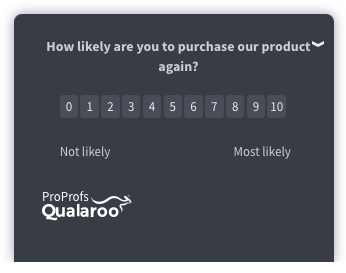
- Redesigned your homepage or overhauled your in-app experience?
Better check to see how it affects your NPS through on-site or in-app surveys.
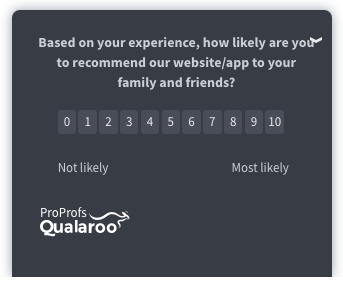
Your NPS score will help you segment your users into three distinct categories based on their level of satisfaction with the changes.
- Promoters- Loyal and enthusiastic customers who score either 9 or 10.
- Passives- Customers who are satisfied with the service who score either 7 or 8.
- Detractors- The unhappy customers who score between 0 and 6.
When a chunk of your customers start to turn into detractors, deploy NPS surveys and target the detractors to uncover all the major pain points sabotaging your customer stickiness.
Once you have the data, you can work on eliminating the pain points to create a product that your users would love to engage with.
The more your users engage with your product, the higher are their chances of sticking with your product. That’s what you’re here for.
To make it easier for you, here are some NPS questions that you can ask your users:
- On a scale of 1 to 10, how likely are you to recommend this product to your family and friends?
- How would you rate the usability of our application on a scale of 1 to 10?
- Based on the last feature update, how likely are you to recommend this product to your friends and colleagues?
- Based on your recent checkout experience, how likely are you to purchase from us again?
- How likely are you to continue using our product based on your recent interaction with our support team?
Your NPS score gives you a pulse on user sentiment about your brand and can be used to predict your ability to retain customers and make them stick.
As far as targeted feedback is concerned, other survey methods like exit-intent surveys and product feedback surveys also work great for collecting in-context feedback. All you have to do is deploy your exit surveys on checkout pages or pages with the maximum bounce rate to uncover the reasons behind the churn.
You can even pose follow-up questions to steer your conversation in a favorable direction to gather specific data.
Related read: What Survey Questions Should I Ask?
2. Prioritize Negative Feedback
Once your NPS ratings are in, what do you do about it? Cross your fingers and hope they don’t have a lot of Twitter followers?
Of course not! You reach out.
Reaching out to users who have indicated that they’ve had a negative experience (detractors) is essential to understanding roadblocks and creating a sticky business.
It gives you a clearer picture of the customer journey to optimize the user experience and turn unsatisfied customers into loyal followers.
But how do you do it?
Ideally, deploying Customer Satisfaction Surveys (CSAT) surveys as a follow-up at this point will help you accurately identify the number of holes in your bucket and will also give you actionable insights to plug those leaks.
Most customer success teams usually send a follow-up note to a detractor to apologize for failing to meet their expectations.
But is that enough?
There’s a huge opportunity to learn from what caused a consumer to become a detractor through CSAT survey and follow-up questions.
You can use open-ended follow-up questions to get to the specifics of the customer pain points, such as:
- What did you find difficult about our process?
- What can we do to improve our process further?
- What is the primary reason preventing you from signing up with us?

- Is there anything we can do to improve our services?
- What can we do to improve our customer support process?
- What can we do to improve your experience with our product?
Such questions are a great start in getting to the “why” behind a negative feeling. Speaking directly with detractors through remote interviews is an even better way to gather this valuable information.
Responding to feedback
Responding is even more important than capturing customer feedback to improve customer engagement and stickiness.
Reports suggest that you can drive 14-21% in increased revenue by simply responding to feedback and engaging your customers.
A phone conversation can also provide valuable insights, giving users a chance to express their feelings, dissatisfaction, and specific needs and showing consumers that your organization truly cares about their opinions.
It also provides the opportunity to show that you care about the customers’ opinions. That gesture is a strong first step in converting a detractor into a promoter.
Watch: How to Create a Customer Satisfaction (CSAT) Survey
3. Engage Your Customers
Customer engagement is all about building meaningful relationships with your customers — the more engaged your customers are, the higher are their chances of coming back for repeat purchases.
Customer engagement has always been a prime focus for businesses because engaged customers generate more revenue through repeat purchases.
Once a customer feels connected to your brand, they are more likely to become repeat customers, so companies implement a number of tools and tactics to keep their customers happy and engaged.
Some of the most popular customer engagement strategies include:
- Sending personalized offers
Every customer is different, and it’s important to understand who they are and what you can do to get their loyalty. Once you have identified your customers, engage them with personalized offers and incentives to encourage them to purchase more often.

- Contests, quizzes and gamification
Contests, quizzes, and gamification have seen increased adoption by businesses worldwide. These are game-like activities and contests where customers can participate and win exciting prizes and rewards. Incentives like these motivate customers to stick to the brand and improve customer loyalty in the long term.
Personality quizzes are also quite popular in the domain as they provide a self-exploration opportunity to the users, and humans being naturally curious, are attracted to those opportunities.
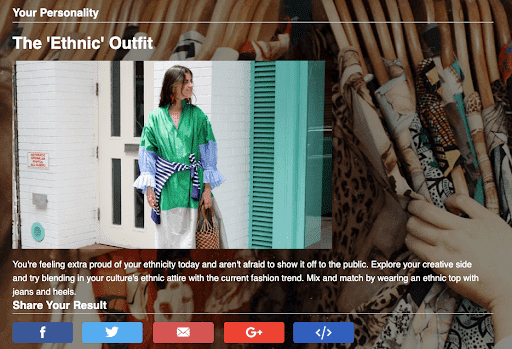
A great example of engaging personality quizzes is a product recommendation quiz. Product recommendation quizzes allow you to personalize shopper experience by asking them questions about their personality and then recommending products that match your shopper’s personality the best.
Simply create a product recommendation quiz using an online quiz maker, post them on your home page and see how it creates magic.
You can significantly reduce website abandonment and improve product stickiness by letting your shoppers explore their personalities and get good product recommendations through interactive quizzes.
As the participation through these activities increases, so does the stickiness.
4. Initiate a User Advisory Board
NPS and feedback aren’t only about fixing what’s broken; they’re also about recognizing which users are having a positive experience and finding ways to replicate that success at scale.
Promoters often have a great relationship with the organization and love the product/service. Feedback teams should take advantage of that positive sentiment and follow up.
Here are some ideas to capitalize on a promoter’s positive sentiments:
Asking for case studies/testimonials
Getting a user’s testimonial is a bit more time-intensive, but this recommendation is far more valuable than their NPS score—it can help close future sales. Identify satisfied customers and ask for case studies from customers who have provided positive feedback.

Asking promoters to speak with prospects
Potential customers are more likely to trust the word of an outside, unbiased source. If a customer really sees the value in your product, check if they’ll be willing to talk with high-value prospects on your behalf.
Implementing a referral program
A promoter has just told you they’d recommend your product/service to a friend, so incentivize them to do that. The cost you incur from paying out incentives often pales compared to the value you receive when customers become an exten
Watch: What Is NPS Score & Why Do You Need It?
5. Run Constant Optimization
Optimizing your product is crucial when it comes to creating something of value. Using your feedback is perhaps one of the most impactful ways of doing so.
It also helps in making people stick with your products. Otherwise, they’re more likely to move to other products with better features and fewer issues.
Running constant optimization helps you ensure that your products:
- don’t run into any compatibility issues or
- develop any critical design flaws that may hamper your customers’ experience and scare them away for good.
The best way to implement optimizations would be to collect in-app feedback from your customers at every stage of the product life cycle. These stages are:
- Introduction– Question the importance of the product for the customer
- Growth– Question the intent behind the purchase
- Maturity– Question the choices moving forward
- Decline/Renewal– Question the reason behind churn/repurchase
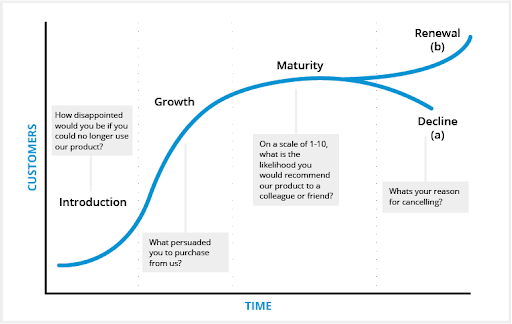
On top of optimizations, you can also release regular product updates to provide more value to your customers and improve their workflow.
Once again, leverage feedback to identify what your users want from your product and give them just that. When your customers know that they are being heard, they are more likely to stick to your product and brand.
Here are some questions you can ask your customers to launch future updates:
- What features would you like to see next?
- What more features can we add to make our product better?
- Is there anything that you expected but did not find?
- If given a chance, what would you like to change in the product?
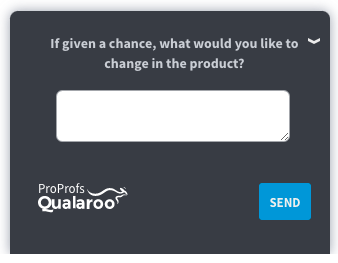
- Is there anything that is missing from the product which should be added?
Satisfying your customers is one thing, but if you exceed their expectations and create a delightful experience they long for, your customers will get increasingly loyal to your brand.
You can also plan your product updates and optimizations through NPS scores collected from your customers based on user experience and their expectations.
Feedback tools like Qualaroo can help you track product feedback with time to see if your optimization efforts are bearing fruit or not.
For example, let’s say you release a new feature in your mobile app at the beginning of September. You can start collecting NPS and CSAT scores to monitor any dips in the score chart and act on the situation quickly.
6. Loyalty Programs
Loyalty programs are great for encouraging your customers to repeat purchases and improving customer stickiness.
According to Rare Consulting, 83% of the customers are more likely to continue doing business and stick with a brand if it offers a loyalty program.
There are plenty of ways you can implement loyalty programs in your business, such as:
- Point programs– The most popular loyalty programs are where customers are supposed to spend upfront to get points in their wallet for the spent amount.
For instance: For every $1 spent by the customers, beauty products company Purist Perk allows them to earn 1 point, which they can redeem later for exciting offers.
- Cashback loyalty programs- Quite similar to point programs, customers need to spend a certain amount of money to get a specified amount refunded as cashback. For instance: CVS Extracare customers can get 2% instant cashback in their wallet and redeem them once they make purchases above $50.
- Tiered programs– Tiered programs have different milestones and an added level of exclusivity attached to each milestone which can be earned by moving up the spending ladder.
For instance: Sephora customers can spend $350/year for VIB tier membership and $1,000/year for Roger status, which gives them a private hotline and access to exclusive events.
- Premium members club- Contrary to other programs, customers need to pay a premium club membership fee upfront to get offers and benefits that they can use anytime they want.
For instance: Customers can pay $119/year for the Amazon Prime membership to get access to their online streaming platform and free shipping for a year, along with other benefits.
- Partnered programs- In partnered programs, customers are given more leeway to spend as they can earn points from one brand and use those points on other brands in their purchases.
For instance: American Express customers can earn points from one retailer and spend them on other retailers like AT&T, Exxon, Hulu, and more.
The trick here is to choose which loyalty programs fit your business the best and implement them to stimulate your customers to come back for more exciting offers and rewards.
Repeat business is what will make your customers stick, so make sure you’re able to engage your customers for a longer period of time and garner loyalty from them.
In today’s competitive market, sustained customer loyalty programs can garner long-term business growth by making your customers more loyal and compelling them to do repeat business.
7. Seamless Service Experience
Customers do not like to be put on hold. Providing a great service experience is the key to customer stickiness, and it all starts with knowing what the customers need and giving them all the answers in a seamless manner.
You can provide good customer service by solving customer’s problems:
- Quickly
- Conveniently
- Empathetically
However, 81% of the customers would just leave after three or fewer instances of bad experiences with the brand, which is not good for customer stickiness.
But that can be prevented if you stay on top of your customer service delivery and always provide the best possible experience. Here are some pointers for the same:
- Know your product
- Have a positive attitude
- Respond quickly
- Personalize your service
- Be creative in problem-solving
Also, tools like Live Chat and Knowledge Base are great for providing a 24X7 seamless service to the customers. With these tools, customers can get answers to the frequently asked questions right away and even connect with the support team in real time to get assistance for more complex problems.
Case Study: AWA Digital
AWA Digital is a UK-based specialized agency that works to grow online sales for clients like Canon, Avis, and Interflora. The company invests in resources to gather powerful insights to run optimization and split tests for eCommerce companies.
Conversion Rate Is Something to Look For
AWA deploys a range of industry-relevant metrics like conversion and bounce rates, but they do not look at them in isolation. Instead, they look at these metrics from how they impact the overall increase in revenue.

“Conversion rate is a popular metric, but it’s like viewing your speedometer when you’re in a race. You want to increase your MPH, but only because you want to win the race. We want to increase conversion rate because we want to increase revenue,”- says John Green, AWA Conversion Optimizer
Customer Feedback Is Where It Begins
AWA taps into the driving forces behind users’ purchase intentions with the help of survey feedback data tools to build effective split tests.
After hearing directly from the customers, AWA highlights specific areas that worry their customers the most, and split tests are then structured based on that information to accomplish the following:
- Ensuring that the test overcomes the pain points
- Redesign the test to eliminate customer pain points and be more explicit about the intent
- Placing the test elements in a more appropriate location, like near a CTA
Instead of relying on guesswork for split testing and optimization, AWA leveraged user feedback to accurately optimize the messaging for their client, Canon, which resonated with the audiences from different geographies. The result was a 700% increase in ROI.
AWA helped Avis by deploying qualitative feedback to identify what their customers wanted and why to provide a much better customer experience. The feedback allowed Avis to launch upgrades that customers wanted, resulting in more revenue per customer through increased customer stickiness.
As the customers observe their feedback being taken into consideration, they grow more loyal to the brand and continue to stick with it for longer periods of time.
Now that we know all about customer stickiness, let’s look at some of the best tools that you can use to retain customers.
3 Best Tools to Improve Customer Stickiness & Retention
Once you have the proper customer retention strategy, you need to pair it with effective tools to maximize impact.
These tools can help you target the right audience to improve customer stickiness, show you real-time results and reduce manual work to a great extent.
Here are three tools that we use at our end to track and measure customer and product stickiness:
Qualaroo
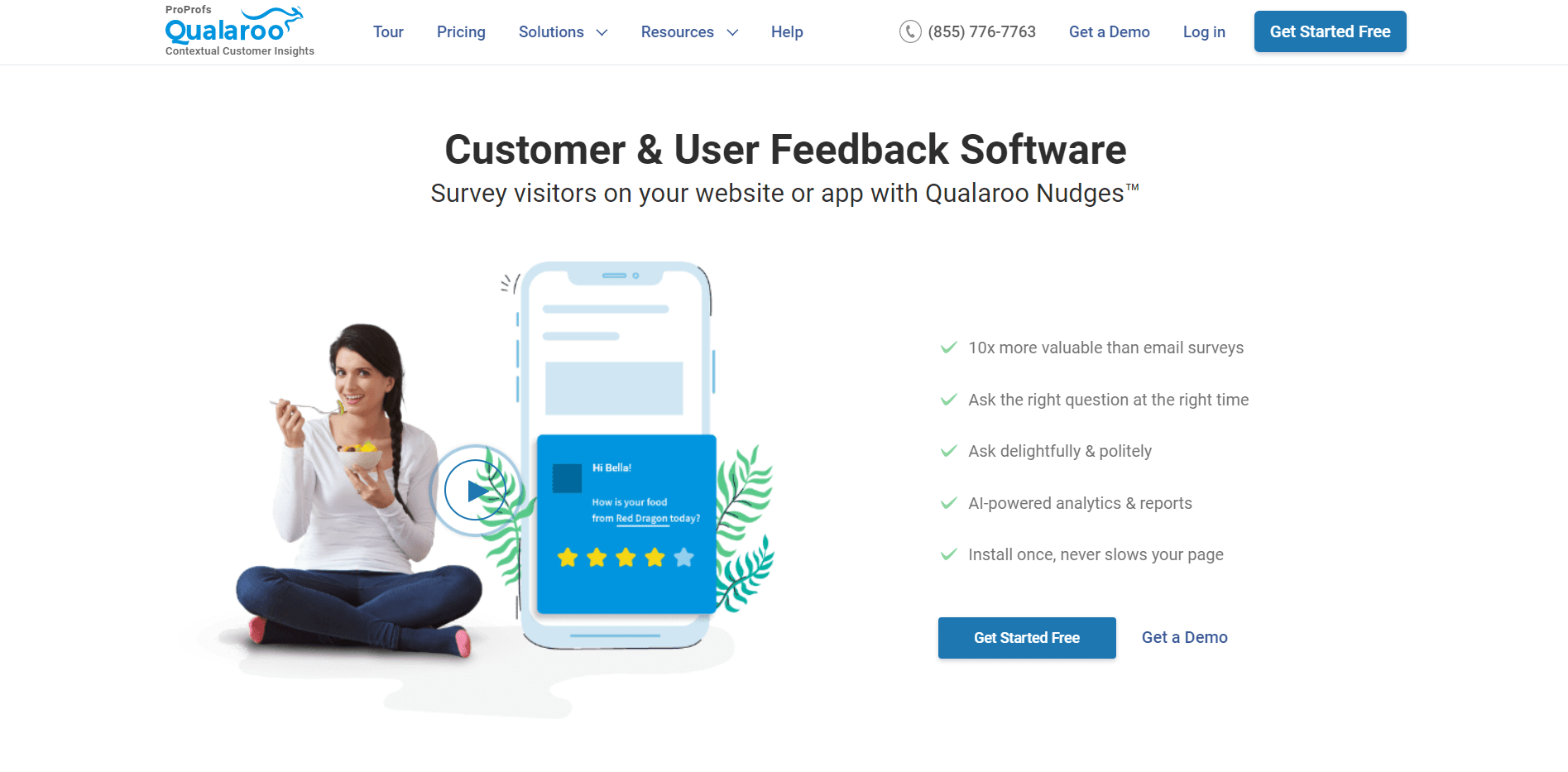
Qualaroo is one of the most advanced feedback collection tools specializing in Voice of Customer (VoC) surveys through its proprietary survey NudgeTM technology.
It provides fully customizable ready-to-use templates to help you design beautiful surveys that your customers cannot resist taking.
With Qualaroo, you can collect actionable insights from your customers by asking the right questions at the right time. It also allows you to analyze the results in real-time to identify and fix customer pain points and reduce churn.
Features:
- Set up within minutes and start collecting feedback instantly.
- Build beautiful surveys with the help of built-in survey templates and tons of customization options.
- Collect valuable insights using different survey types, including NPS, CSAT, CES, UES, and more.
- Gather feedback only from the relevant customers with advanced targeting features.
- Schedule surveys to make them appear at a specific time or random intervals.
- Integrate with some of the most popular CRM and marketing tools to boost customer stickiness.
2. BIGContacts

BIGContacts is one of the most popular CRM tools that you can use to manage your prospects, boost customer experience and increase stickiness.
With BIGContacts, you can centralize customer data management and track your contacts by stage, opportunity, activity, and other custom fields. It can help you improve buyers’ journeys, sales process, customer support, and other aspects of your customer success team.
Features:
- Easy to use and scalable for companies of all sizes.
- Get a 360-degree view of all the activities and track information with custom fields.
- Send personalized and relevant messages by building a custom sales pipeline.
- Automatically adjust marketing and sales emails based on key events.
- Create campaigns, nurture leads and easily manage reports in one place.
- Follow up with your customers on a timely basis with the help of automated tasks and reminders.
- Focus on unengaged customers with powerful analytics and reports to retain them.
3. Crazy Egg
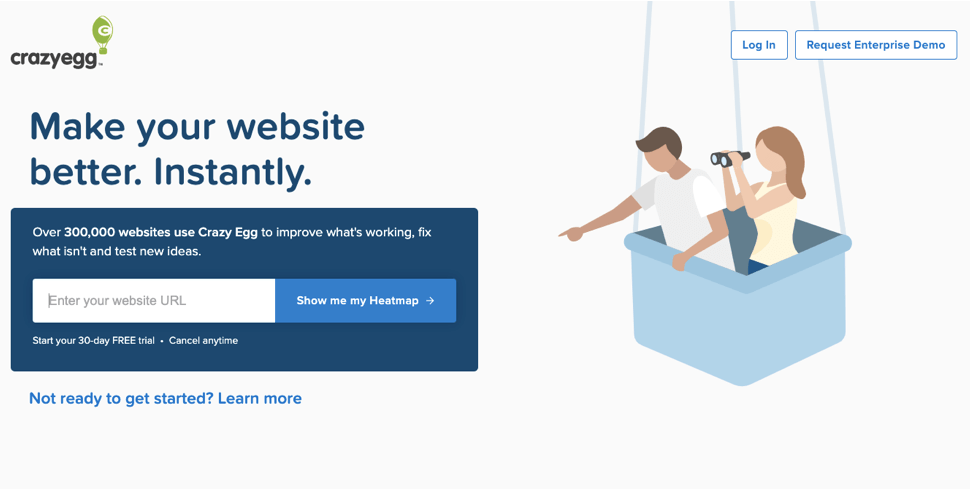
Crazy Egg is a great tool for knowing how your customers interact with your website. You can identify problem areas and eliminate them to boost customer stickiness. The built-in heatmaps let you visualize how your users navigate your website and what problems they face along the way.
This method is much more reliable than raw data and spreadsheets as they don’t give you a clear perspective.
Features:
- Conduct A/B testing to see how your users engage with different website elements.
- Analyze how users interact with different versions of your website with the help of snapshots.
- Use heatmaps to get an overview of where users click on your website and identify areas on your website that are more engaging
- Identify individual clicks on your website with the help of Confetti which registers and visualizes every click on the website.
- Use scroll maps to see how far your users go down the webpage before leaving.
Improve Customer Stickiness: Grow Your Business
Creating products with solid customer stickiness is the key to taking your business to the next level.
At the end of the day, every business wants people to repeatedly use their products and receive a great sense of satisfaction and experience.
This is where user feedback can prove to be vital.
From helping you understand your most valuable customers to identify how changes to your products/services affect different users, feedback can help you make data-backed decisions.
However, its potential can only be realized when your data is paired with the right metrics, thoughtful analysis (by design), and planned follow-up.
Qualaroo is one of the best picks for offering robust feedback surveys to see how likely your customers are to stick with your brand. You get a range of question templates with built-in analytics as a complete package for increasing customer stickiness.
So start implementing these strategies to encourage repeat purchases in your business. It will help you build a loyal customer base and promote overall business growth.
FREE. All Features. FOREVER!
Try our Forever FREE account with all premium features!



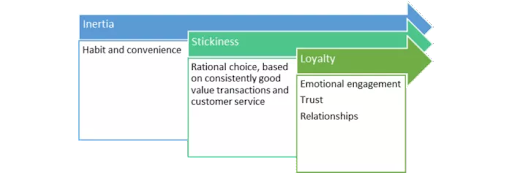
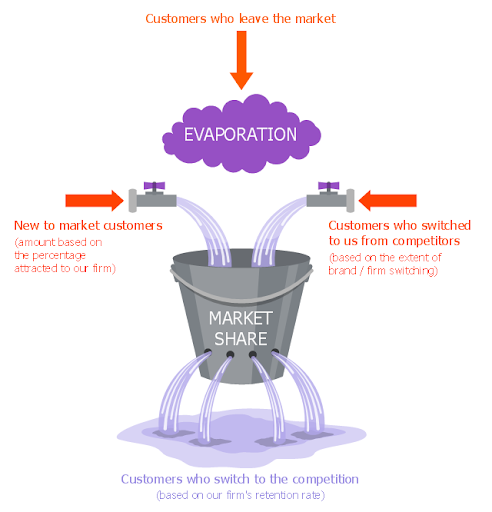
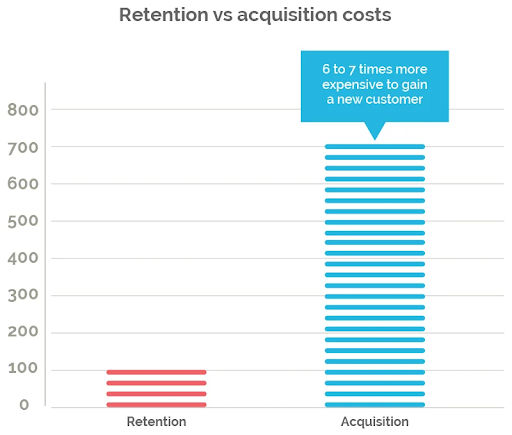
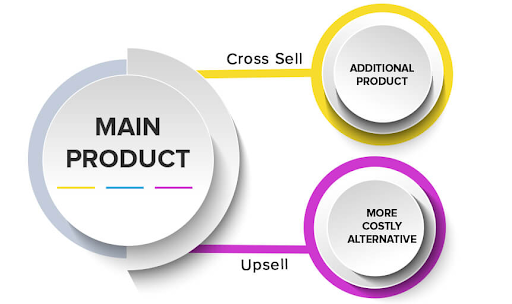
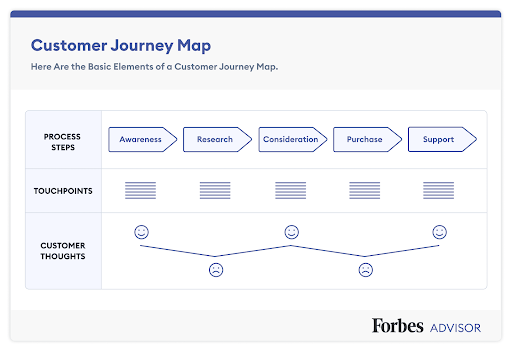
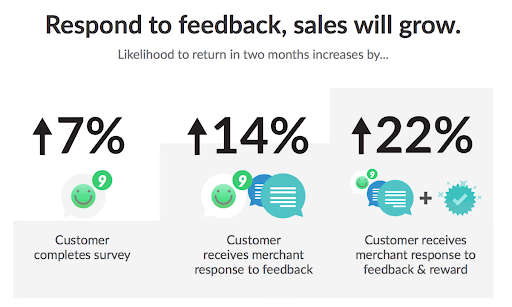
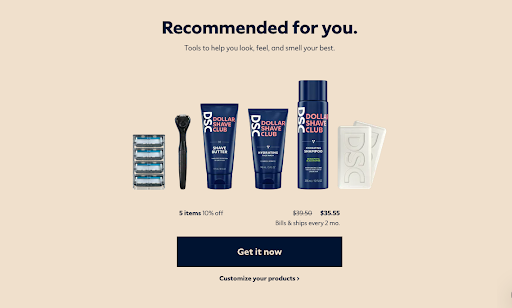
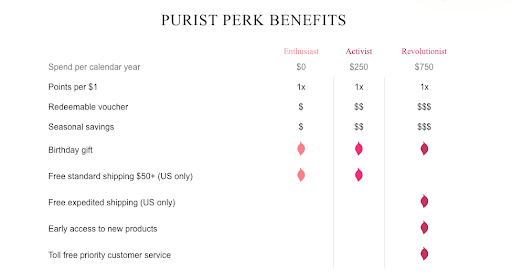
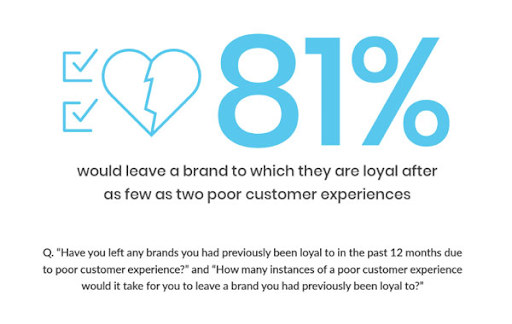
 We'd love your feedback!
We'd love your feedback! Thanks for your feedback!
Thanks for your feedback!



